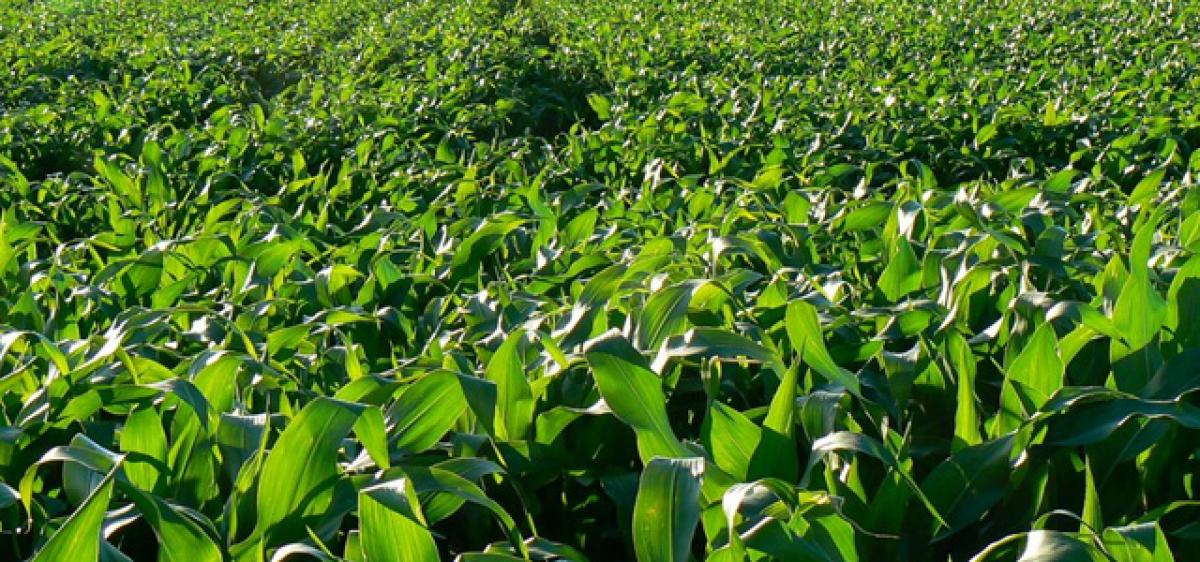Live
- IIIT Hyd launches eMSIT
- Gold rates in Vijayawada slashes, check the rates on 18 April 2024
- Gold rates in Hyderabad slashes, check the rates on 18 April 2024
- Konda Vishweshwar advocates for Ram Rajyam in Chevella
- Tirupati: Political heat, fervour rise as nomination phase set to begin
- CEC releases notification for fourth phase of elections, nominations to begin at 11am
- Grand celebrations mark Sita Rama Kalyanam in Ibrahimpatnam
- Guntakal: TDP candidate Jayaram banks on pro-NDA wave
- Suu Kyi moved from prison to house arrest due to heat
- 14 killed as Russian missiles slam into Ukraine
Just In

Maize prices are expected to rule steady in the next half year from now, on account of renewed interest of stock holders and failure of rabi crop in some pockets.
Kurnool: Maize prices are expected to rule steady in the next half year from now, on account of renewed interest of stock holders and failure of rabi crop in some pockets. However, during the current season, the prices remained at Rs 1400- Rs 1500 per quintal. Despite the drop in the export volumes and bounty harvest in kharif season, the prices remained high due to some extraneous factors. Kharif production was estimated at 17.6 million tonnes while the total production during the current year is expected to touch 22.98 million tonnes as against the demand of 22 million tonnes.
Maize is the third most important cereal crop in the country after rice and wheat. The starch-rich cereal is consumed indirectly by households in the form of eggs, meat, eggs, chicken, fish, prawn, milk and milk products. Maize accounts for 9 per cent of food grain production in the country. Karnataka, Telengana, Andhra Pradesh, Rajasthan, Maharastra, Bihar, UP, MP and Gujarat are the leading maize producing states in the country. Maize is grown in around 90 lakh hectares accounting for a production of 220 lakh tonnes.
The government fixed a minimum support price (MSP) of Rs 1365 per quintal for maize during the current year with an enhancement of Rs 40 over the previous year’s price. MSP was not implemented this year as the market prices were good and above the support price. As for the consumption pattern, poulty and cattle feed sector is the largest consumer of maize accounting for 60 per cent of the total maize consumed.
Around 13.26 million tonnes are consumed annually by the feed sector while the starch and brewery sector utilises around 4. 69 million tonnes. Direct human consumption account for only 1.79 m tonnes. Preservation of grain for seed purpose is 0.25 million tonnes and shortage and wastage is estimated at 0.51 million tonnes.
According to Dr. Mudit of Agriwatch, export of maize to other Asian countries has been declining gradually during the past few years causing disappointment to the farmers and trading community. The country which exported 3.6 m tonnes a few years ago could set apart only 0.5 m tonnes during the current year.
Though the domestic demand is growing at an annual rate of 3.6 per cent, the dismal performance on the export front would have a long-term impact on the production. Also, the government is under pressure from the industry to import maize from time to time to subdue prices and ensure adequate supply.
Last season, the Ministry of Commerce allowed import of five lakh tonnes of maize and floated global tenders. Fortunately, no international agency evinced interest to supply maize at the fag-end of the season due to logistics problems. Had the import materialised, the domestic prices could have plummeted and impacted the farmers’ returns during the current season.
Also, the threat of genetically modified grain making an entry into the country looms large if the import is allowed without second thoughts. It is a sensitive subject that maize directly goes into human food chain and cattle feed. Maize is a farmer-friendly crop requiring less drudgery. However, the crop cannot withstand long spells of drought.
Development of drought-resistant maize hybrids would offer great benefits to farmers as well as economy of the country. Meanwhile, the demand for coarse grain is on the rise, of which maize is the major constituent. Foxtail millet (korra), jowar and bajra are the important grains under this category. Driven by health consciousness, coarse grain consumption is likely to peek to 57.9 m tones by 2020 while supply would be around 42.3 m tonnes accounting for a shortage of 15.6 m tonnes.
By Sreenivasulu Dalavai

© 2024 Hyderabad Media House Limited/The Hans India. All rights reserved. Powered by hocalwire.com







